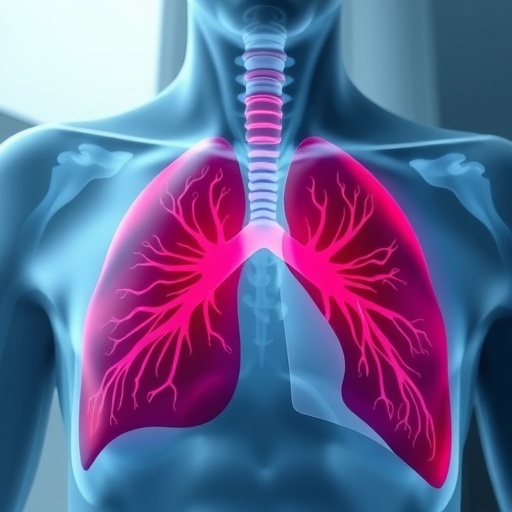
Credit: UPMC
PITTSBURGH, May 7, 2021 – In a paper published today in Nature Communications, an international group of collaborators led by researchers at UPMC Children’s Hospital of Pittsburgh have identified a genetic cause of a rare neurological disorder marked by developmental delay and loss of coordination, or ataxia.
The disorder, scientists found, is caused by mutations in a protein called GEMIN5–one of the key building blocks of a protein complex that controls RNA metabolism in neurons. No mutations in GEMIN5 were previously linked to any genetic disease.
“It’s just like building a house,” said senior author Udai Pandey, Ph.D., associate professor of pediatrics, human genetics and neurology at the University of Pittsburgh School of Medicine. “You take out the most important brick at the base and the whole building falls apart.”
GEMIN5 is part of a protein complex that regulates a slew of important cellular processes, including development of specialized outgrowths from nerve cells called dendrites and axons. Interestingly, mutations in another key protein of the complex, named survival motor neuron protein, cause a different devastating disorder–spinal muscular atrophy.
To gather material for the study, Pittsburgh researchers contacted pediatricians, geneticists and neurologists from all over the globe, eventually collecting data from 30 patient families in 12 different countries.
Because isolating live neurons from people isn’t possible, researchers had to come up with another way of getting samples for future testing. They collected blood samples from pediatric patients who were referred to neurogenetic clinics with undiagnosed neurological symptoms. Blood samples were then processed to isolate cells that, with careful tinkering in the lab, were reprogrammed into neurons.
After comparing genetic material of reprogrammed neurons from sick children with that of unaffected relatives, scientists linked neurologic manifestations of the disease to 26 mutations in the GEMIN5 gene that cause damage to the structure of the protein.
“Children came into the clinic with non-specific symptoms, such as developmental delay and abnormal gait. Their doctors ran all the possible tests, including assessing a child’s metabolic function, to no avail–their conditions had no easy explanation,” said Deepa Rajan, M.D., assistant professor of pediatrics, Pitt School of Medicine, neurologist at UPMC Children’s Hospital and a co-first author of the study. “It was not until we did an extensive genome analysis that we found that these patients had mutations in the GEMIN5 gene.”
“Many genetic disorders seem individually rare, but collectively they are relatively common,” added Rajan, who also is director of the Neurogenetics Clinic at UPMC Children’s Hospital. “We now are able to harness next-generation technology to help diagnose previously undiagnosed children, and each new gene discovery is the start of the journey to understanding each of these diseases better.”
Additional experiments linked damage to GEMIN5 protein to disease manifestations more definitively. Scientists found that depleting an analog of human neuronal GEMIN5 protein in fruit flies was deadly if it happened in early stages of the fly’s life cycle, or drastically delayed its development if such disruption happened later.
“The most exciting part of being a researcher is working on a project that directly helps families,” said Pandey. “We are hopeful that because of our study, neurologists will now consider testing for GEMIN5 mutations and that labs will include GEMIN5 in their testing for ataxic disorders. Genetic diseases are challenging to identify and treat, but if we find a cure, it will make a massive difference in someone’s life.”
###
Other authors on the manuscript include Sukhleen Kour, Ph.D., Tyler Fortuna, Ph.D., Eric Anderson, Ph.D., Dhivyaa Rajasundaram, Ph.D., and Caroline Ward, all of Pitt, among 70 total authors.
This work was supported by a University of Pittsburgh Children’s Neuroscience Institute research grant.
To read this release online or share it, visit https:/
About UPMC Children’s Hospital of Pittsburgh
Regionally, nationally, and globally, UPMC Children’s Hospital of Pittsburgh is a leader in the treatment of childhood conditions and diseases, a pioneer in the development of new and improved therapies, and a top educator of the next generation of pediatricians and pediatric subspecialists. With generous community support, UPMC Children’s Hospital has fulfilled this mission since its founding in 1890. UPMC Children’s is recognized consistently for its clinical, research, educational, and advocacy-related accomplishments, including ranking in the top 10 on the 2020-2021 U.S. News & World Report Honor Roll of America’s Best Children’s Hospitals. UPMC Children’s also ranks 15th among children’s hospitals and schools of medicine in funding for pediatric research provided by the National Institutes of Health (FY2019).
About the University of Pittsburgh Schools of the Health Sciences
The University of Pittsburgh Schools of the Health Sciences include the schools of Medicine, Nursing, Dental Medicine, Pharmacy, Health and Rehabilitation Sciences and the Graduate School of Public Health. The schools serve as the academic partner to the UPMC (University of Pittsburgh Medical Center). Together, their combined mission is to train tomorrow’s health care specialists and biomedical scientists, engage in groundbreaking research that will advance understanding of the causes and treatments of disease and participate in the delivery of outstanding patient care. Since 1998, Pitt and its affiliated university faculty have ranked among the top 10 educational institutions in grant support from the National Institutes of Health. For additional information about the Schools of the Health Sciences, please visit http://www.
http://www.
Contact: Anastasia Gorelova
Mobile: 412-491-9411
E-mail: [email protected]
Contact: Andrea Kunicky
Mobile: 412-552-7448
E-mail: [email protected]
Media Contact
Anastasia Gorelova
[email protected]
Related Journal Article
http://dx.





